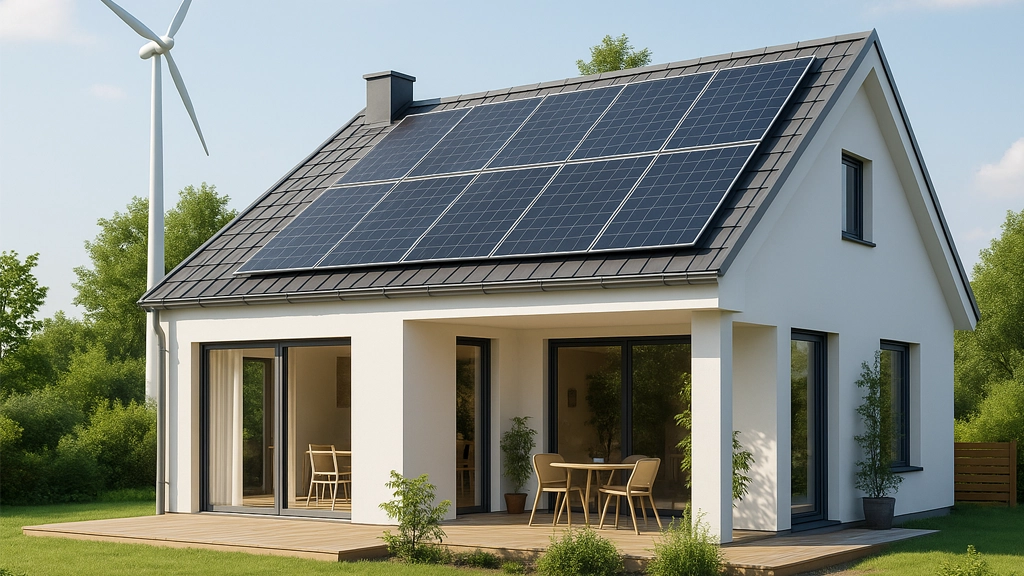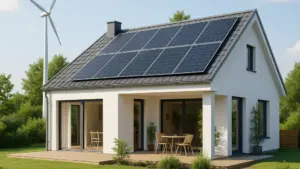
Alex, a suburban homeowner, never imagined his rooftop solar panels and home battery could do more than shave a few dollars off his monthly bill. He assumed that once the panels were installed and the appliances switched to “eco mode,” his part was done. Maria, who runs a family‑owned café downtown, focused solely on steady supply and predictable rates—green energy seemed complicated and out of reach.
What Alex and Maria both didn’t realize is that by joining a Virtual Power Plant & (Home) Energy Management System (VPP/(H)EMS), they could turn passive assets into active revenue streams. Instead of simply consuming power, they’d become micro‑grid players: generating, storing, and trading electricity on a dynamic platform—all while lowering their own costs.
Imagine Alex’s roof as a mini power station. On sunny afternoons, his solar array produces more energy than his family needs. Rather than sending that surplus back into the void, the VPP/(H)EMS bundles Alex’s excess with thousands of other homes. Together, they bid into ancillary‑services markets—helping the grid balance frequency and voltage. In practice, Alex sees on his dashboard exactly when to store energy in his battery, sell it back to the grid at peak rates, or shift his dishwasher and EV charger to off‑peak hours. His family’s bills drop by 20–30%, and every kilowatt they sell helps avoid firing up a costly, carbon‑spewing peaker plant.
Down the road, Maria’s café taps into the same platform. She programs the VPP to reduce coffee‑machine usage by 10% during morning peak, then automatically ramps it back up when rates fall. Before long, her predictable demand‑response payments offset her monthly supply costs, all while promoting a “green café” image that draws eco‑minded customers.
For policymakers and utilities, the promise is irresistible: Instead of pouring billions into transmission towers that sit idle 80% of the time, they can harness distributed resources to fill capacity gaps on demand. This approach slashes capital expenditures, accelerates integration of wind and solar, and helps countries lock in CO₂‑reduction targets years ahead of schedule. Real‑time data from the VPP/(H)EMS also empowers regulators to craft smarter dynamic‑tariff programs and reward participants for flexibility, rather than forcing everyone onto one‑size‑fits‑all pricing.
Energy providers, too, gain a new frontier of services. By operating the VPP as a platform, they reduce balancing costs, smooth peak loads, and open fresh revenue channels—selling grid‑stabilization services and green‑energy contracts to clients who once felt shut out of the market.
The numbers speak for themselves: virtual power aggregation can defer the need for new peaker plants for years, cutting capital burdens by up to 40%. Consumers like Alex and Maria routinely see 20–30% savings on bills, plus extra income from selling flexibility. And on a system‑wide level, optimized dispatch of distributed assets can knock 10–15% off total power‑sector CO₂ emissions—an essential wedge if governments are to meet Paris‑aligned goals.
For government agencies mapping future infrastructure and energy providers seeking to reinvent their offerings, the message is clear: The next big resource isn’t underground—it’s on rooftops, in basements, and behind meter screens. By unlocking the VPP/(H)EMS pathway, we can ensure reliable capacity, cut costs for everyone, and usher in a greener, more resilient energy era—one home and one business at a time.
Curious how your jurisdiction or company can pilot this? Reach out to learn how VPP/(H)EMS platforms are already transforming grids around the world—and how you can be the catalyst in your region.





